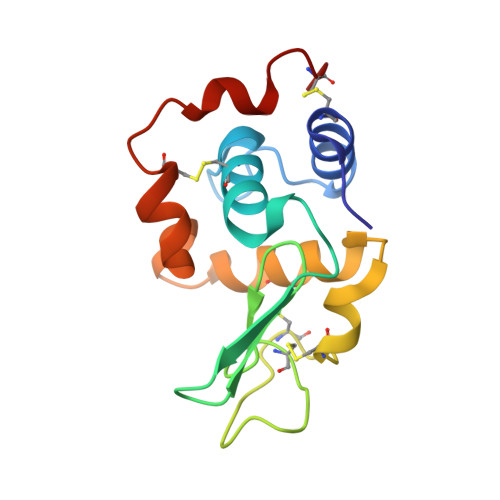Positive contribution of hydration structure on the surface of human lysozyme to the conformational stability.
Funahashi, J., Takano, K., Yamagata, Y., Yutani, K.(2002) J Biol Chem 277: 21792-21800
- PubMed: 11927576
- DOI: https://doi.org/10.1074/jbc.M110728200
- Primary Citation of Related Structures:
1GF8, 1GF9, 1GFA, 1GFE, 1GFG, 1GFH, 1GFJ, 1GFK, 1GFR, 1GFT, 1GFU, 1GFV, 1INU - PubMed Abstract:
Water molecules make a hydration structure with the network of hydrogen bonds, covering on the surface of proteins. To quantitatively estimate the contribution of the hydration structure to protein stability, a series of hydrophilic mutant human lysozymes (Val to Ser, Tyr, Asp, Asn, and Arg) modified at three different positions on the surface, which are located in the alpha-helix (Val-110), the beta-sheet (Val-2), and the loop (Val-74), were constructed. Their thermodynamic parameters of denaturation and crystal structures were examined by calorimetry and by x-ray crystallography at 100 K, respectively. The introduced polar residues made hydrogen bonds with protein atoms and/or water molecules, sometimes changing the hydration structure around the mutation site. Changes in the stability of the mutant proteins can be evaluated by a unique equation that considers the conformational changes resulting from the substitutions. Using this analysis, the relationship between the changes in the stabilities and the hydration structures for mutant human lysozymes substituted on the surface could be quantitatively estimated. The analysis indicated that the hydration structure on protein surface plays an important role in determining the conformational stability of the protein.
Organizational Affiliation:
Institute for Protein Research, Osaka University, Yamadaoka, Suita, Osaka 565-0871, Japan.















